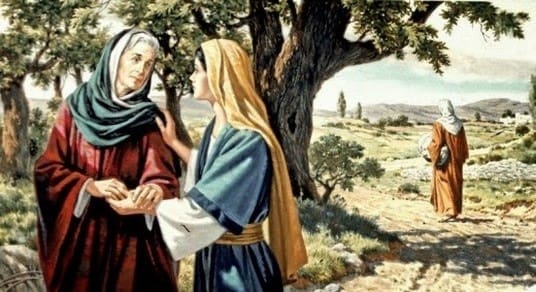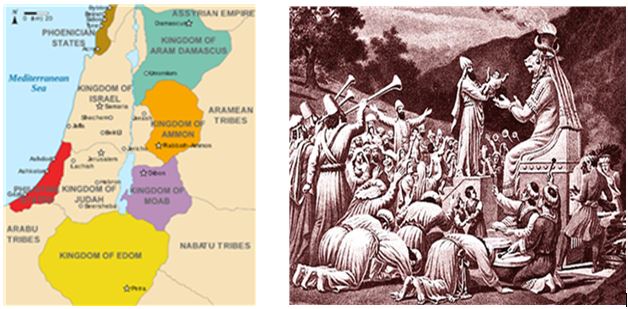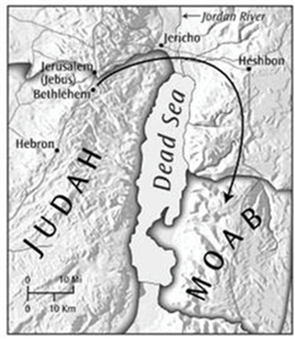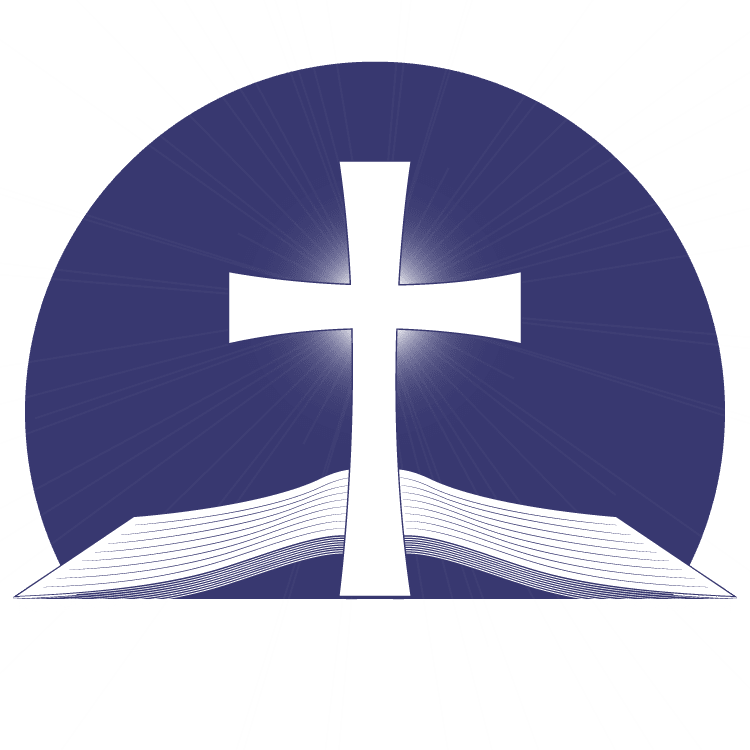The Five Women in the Lineage of Jesus
“Ruth: A Woman of Love” Matthew 1:1-17, Ruth 4:1-22

Old Testament Readings: Psalm 126:1-6, Zephaniah 3:14-20
New Testament Reading: Philippians 4:4-7
The Five Women in the Lineage of Jesus
“Ruth: A Woman of Love”
Matthew 1:1-17, Ruth 4:1-22
Wayne J. Edwards, Pastor
In his genealogy of Jesus, Matthew included four women with tainted reputations and one whose reputation was temporarily tainted by Jesus.
- Tamar – a Gentile widow, who seduced her father-in-law into a sexual union, from which Perez was born, through whom came:
- Rahab – a Canaanite harlot, who hid the spies Joshua sent into Jericho. Rahab married Salmon, and gave birth to Boaz, who married:
- Ruth – a Gentile widow from Moab who risked her life to remain with her mother-in-law. God arranged for her to marry Boaz, and she gave birth to Obed, the grandfather of David, who had an adulterous affair with:
- Bathsheba – the wife of Uriah, the man David arranged to be killed so he could marry Bathsheba. Bathsheba gave birth to Solomon, who continued the seed-line of the Messiah down to Jesus, who was born to:
- Mary – the mother of Jesus. While a devout woman of God, and devoted to Joseph, Mary lived with the shame of her untimely pregnancy until the day Jesus revealed Himself to the world as the Savior God had sent Him to be.
“God delights to display the glory of His grace,
and the wonders of His love, to and through those the
world considers worthless.”
The life-stories of these five women confirm the doctrine of the sovereignty of God. That God was able to accomplish His will, in spite of their life choices and circumstances show us:
- God’s plan of redemption will be carried out in His way, in His time, and for His glory – Isaiah 46:9-13
- Considering the sinful lives of four of these women, one might conclude the seed-line of the Savior would have been lost.
- However, 2000 years ago, God fulfilled His promise to Abraham and David, as Mary gave birth to Jesus, the Promised Messiah.
- God’s plan of redemption is not dependent upon our righteousness – Romans 11:33-36
- In spite of the sinful act of Abraham, Judah, David, Solomon, Tamar, Rahab, Ruth, and Bathsheba, God’s eternal plan of redemption was not deterred.
- Even in His lineage, Jesus, who knew no sin became sin for us, that we who knew nothing but sin could become as righteous as Him.
“We are either justified by a righteousness in us,
or by a righteousness that is apart from us;
there is no third way.”
R.C. Sproul
Background to the Book of Ruth:
- Most likely written by Samuel, Ruth is one of only two Old Testament books that received their name from women, the other book being Esther.
- Ruth, which means friendship, is not mentioned outside her book in the Old Testament, and once in the New Testament regarding her place in the genealogy of Christ.
- While the Book of Ruth is about the love of a daughter-in-law for her mother-in-law, its main purpose is to illustrate God’s plan for the redemption of lost man.
1. The Curse of Moab –

Ruth was from Moab, a barren desert on the Eastern side of the Dead Sea.
- Lot fathered a child through his oldest daughter whose name was Moab.
- In addition to that curse, God placed another curse on Moab, because of their rejection of Him as the One, True God, and their worship of the false god of Chemosh, including child sacrifices.
- In Isaiah 15-16, the prophet said the glory of Moab would come to an end, and few of the people would survive.
- The prophets Jeremiah, Ezekiel, and Amos record the devastating judgment God brought upon Moab, and according to Deuteronomy 23, the curse extended to the 10th generation.
- Ruth was born near the end of the curse but still separated from those who could be redeemed.
- According to Isaiah 56, God said those who were separated from the covenant could be included if they turned away from their false gods and joined with the One True God.
2. The Conversion of Ruth –
Because of a famine in Israel, Elimelech, Naomi, and their two sons, Mahlon and Chilion, moved to Moab to survive.
- Within a few years, Elimelech died, Mahlon and Chilion married Moabite women, and both men died, leaving Naomi, a Jewish widow, with two Moabite widows, Orphah and Ruth.
- Hearing the famine in Israel had ended, Naomi decided to return to Bethlehem to live with her family and told her daughters-in-law to remain in Moab with their families.
- Naomi discerned that the hand of the Lord had gone against her, and if her daughters-in-law remained with her, then God would be against them as well.
- Orphah decided to return to her family and to her gods, but Ruth wanted to know more about the true and living God.
“Do not urge me to leave you or turn back from following you;
for where you go, I will go, and where you lodge, I will lodge.
Your people shall be my people, and your God, my God.”
Ruth 1:16
- Naomi and Ruth made the 60-mile journey from Moab to Bethlehem, which would require two full days.
- As only God could have arranged it:
- The women entered Bethlehem on the first day of the barley harvest.
- Ruth was allowed to glean in a field that belonged to Boaz, a relative of Elimelech, her father-in-law.
- Naomi realized what God was doing and advised Ruth what she must do according to the custom of the day.
- Boaz realized what God was doing and assured Ruth he would do what was necessary to become her “kinsmen redeemer,” and to take her as his wife.

3. The Conception of Obed –
- Boaz and Ruth gave birth to a son named Obed, who not only carried the seed-line of his father, but the seed-line through which King David would descend, and through which the King of Kings would descend.
- The person and actions of Boaz pictures the Person and Work of Jesus Christ, our Redeemer, who gave His life to redeem us from our sins, and to take us to be His Bride.
The love story of Ruth provides another illustration of:
- God’s sovereignty – God rules in the affairs of men.
- God’s providence – God turns mistakes into miracles.
- God’s purposes – God works all things together for good, to those who are called according to His purpose.





